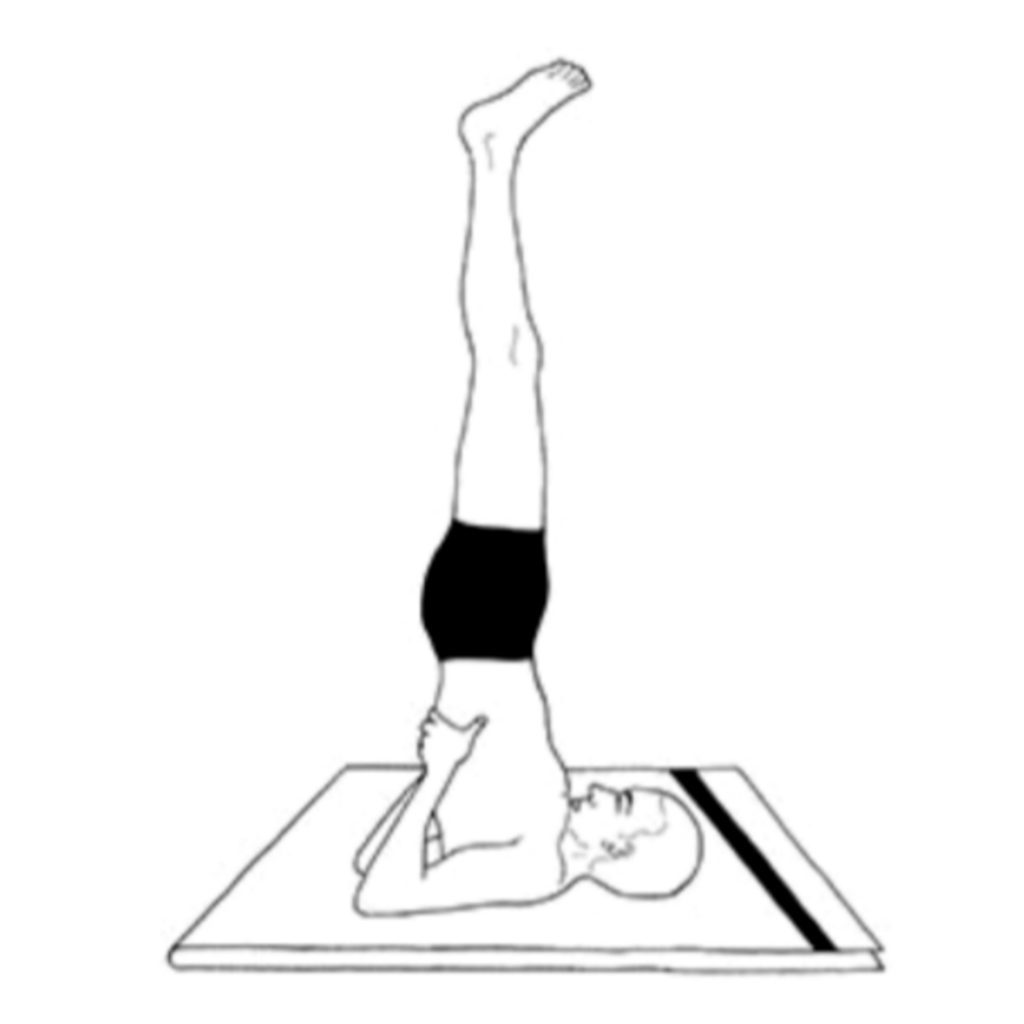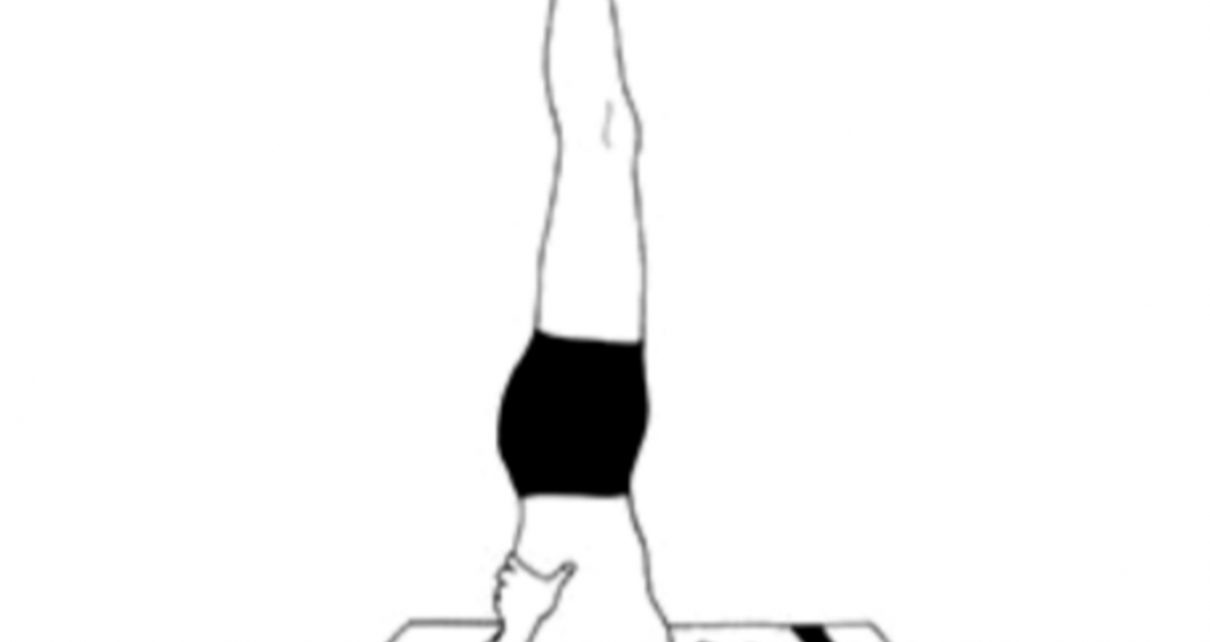March | 24, 2019 :: Since the civilization, the yoga has made a different place in the lives of the people. From the last couple of years, the people have realized the importance of fitness. As the number of people has taken yoga globally, it has proved the best technique to maintain the best fitness, with a peaceful mind and the high spirit.
The Queen of Yoga
There are many poses in yoga, and the benefits of yoga vary depending on the type of poses you practice every day. Among all the postures of yoga, there is a queen of all the poses which has made a vast number of people practice it and take the highest advantage for their health. The name of the pose that is called the queen of yoga is sarvangasana.
With this type of poses, many people have taken their fitness to the best level. With the name, it tells that sarvangasana yoga influences the functioning of all the body parts. The pose is beneficial in maintaining the mental and physical health. Due to all these benefits, this is known as the queen of all the asanas.

The shoulderstand or sarvangasana, as described by B.K.S. Iyengar, is the mother of all yoga poses. In the Sanskrit language, sarva means “all” or “entire” and angameans”organ” or “body part.”
Translated into English sarvangasana means “full body pose” because of its benefits to the whole body. Though this asana (posture) also has enough benefits to fill a book, here are just a few of the most common:
The below mentioned benefits will help people to understand the benefits of this pose :-
(1.) This pose of yoga is best for woman who suffers complication like menstrual problem, urinary disorder, uterine translation, including hernia.
(2.) It gives a great relief to the headache and reducing the stress level. This pose helps a lot in relaxing the mind. Apart from this it also helps to increase the blood circulation in the body. By following the sarvangasana yoga steps it is easy to maintain the blood flow in the head as well as control the hair loss and premature hair greying.
(3.) It helps to relief the disorders associated with the ear, nose, and throat.
(4.) This yoga helps to stimulate the thyroid and parathyroid gland which helps to normalizes the overall functioning of the body. This is the main reason that practicing this yoga pose help to increase the blood circulation in the upper part of the body. The functioning of the pituitary gland will help to improve the flow of blood and oxygen. In short the functioning of the entire endocrine system get improved by a higher margin.
(5.) It helps to tone up the backbone and assist the relieving from the lower back pain. This pose gives a good relief to the people who keeps on working for a long time sitting on the chair.
(6.) This also helps to strength the respiratory system if the person completely follows the sarvangasana steps. This help to improve the lung capacity, the diaphragm, the muscles of the respiration work against the gravity. This also helps to improve the abdominal respiration and due to this it is a boon for the Asthma patients.
(7.) It also helps to strength the nerve which connects the neck with the brain. With the help of this yoga pose it helps to increase the flexibility of the nerves.
The yoga practiced under the expert supervision will give you a lot of health benefits. Make sure that you are practicing the correct pose to get to the highest level of fitness. This pose of yoga will help you a lot to stay fit and enjoy a healthy lifestyle.
Benefits of Sarvangasana according to B.K.S. Iyengar
1. By practicing sarvangasana, we work with gravity, instead of against it, which helps the bowels move freely and aids digestion significantly.
2. The heart gets a break, but the good kind. As you are lying in an inverted position, the heart doesn’t have to work as hard to pump blood to the furthest parts of the body. Since this is one of the hardest working muscles in the body, it deserves a break!
3. The lymphatic system is responsible for how well our immune system works. The lymph is similar to blood in that it depends on gravity for movement. So, by staying inverted, the lymphatic system gets stimulated and boosts our immune response.
4. Since we create a firm chin lock (jalandhara bhanda) when practicing sarvangasana and, the blood supply to the head gets regulated, this helps relieve nasal congestions and headaches. This physical lock also activates the Vishuddhi Chakra.
5. Sarvangasana is said to improve your confidence. When you do it consistently, you feel alive and confident. This likely has to do with the subtle life energy it influences in the body.
6. B.K.S. Iyengar, a famous yogi has said, “Due to the soothing effect of the pose on the nerves, those suffering from irritation, shortness of temper, nervous breakdown and insomnia are relieved” by practicing shoulderstand.
7. Sarvangasana strengthens the neck, upper back and shoulders.
How to do Sarvangasana
Lie on the back on a folded blanket.
Check that the head and spine are aligned and that the legs are straight with the feet together.
Place the hands beside the body with the palms facing down.
Relax the entire body and mind.
Contract the abdominal muscles and, with the support of the arms, slowly raise the legs to the vertical position, keeping them straight.
When the legs are vertical, press the arms and hands down on the floor.
Slowly and smoothly roll the buttocks and spine off the floor, raising the trunk to a vertical position.
Turn the palms of the hands upward, bend the elbows and place the hands behind the ribcage, slightly away from the spine, to support the back. The elbows should be about shoulder width apart.
Gently push the chest forward so that it presses firmly against the chin.
In the final position, the legs are vertical, together and in a straight line with the trunk. The body is supported by the shoulders, nape of the neck and back of the head. The arms provide stability, the chest rests against the chin and the feet are relaxed.
Close the eyes. Relax the whole body in the final pose for as long as is comfortable.
To return to the starting position, bring the legs forward until the feet are above and behind the back of the head. Keep the legs straight.
Slowly release the position of the hands and place the arms on the floor beside the body with the palms down.
Gradually lower each vertebra to the floor, followed by the buttocks, so that the legs resume their initial vertical position.
Lower the legs to the floor slowly, keeping the knees straight.
Perform this action without using the arms for support. The whole movement should combine balance with control so that the body contacts the floor slowly and gently.
Relax in shavasana until the respiration and heartbeat return to normal.
Breathing: Inhale in the starting position.
Retain the breath inside while assuming the final pose.
Practise slow, deep abdominal breathing in the final pose.
Retain the breath inside while lowering the body to the floor.
Duration: When first practising, hold the final position for a few seconds only, gradually increasing the time over a period of weeks to an optimum of 3 to 5 minutes for general health. This practice should be performed only once during the asana program.
Awareness:
Physical – on the various sensations of the body adjusting to its inversion, on control of the movement, on the neck or thyroid gland, and on the breath.
Spiritual – on vishuddhi chakra.
Sequence: Sarvangasana is ideally practised immediately be fore halasana. After halasana, either matsyasana, ushtrasana or supta vajrasana should be practised as a counter pose for half the combined duration of sarvangasana and halasana.
Contra-indications: This asana should not be practised by people suffering from enlarged thyroid, liver or spleen, cervical spondylitis, slipped disc, high blood pressure or other heart ailments, weak blood vessels in the eyes, thrombosis or impure blood. It should be avoided during menstruation and advanced stages of pregnancy.
Benefits: By pressing the chest against the chin, this asana stimulates the thyroid gland. It generally balances the circulatory, respiratory, digestive, reproductive, nervous and endocrine systems. It also tranquillizes the mind, relieves mental and emotional stress, and helps clear psychological disturbances, boosting the immune system. Its influence on the parathyroid glands ensures normal development and regeneration of the bones.
Abdominal breathing is induced, improving the exchange of air in the body, relieving stress and massaging the abdominal organs. Sarvangasana releases the normal gravitational pressure from the anal muscles, relieving haemorrhoids. It tones the legs, abdomen and repro ductive organs, draining stagnant blood and fluid, and increasing circulation to these areas.
Flexibility of the neck vertebrae is improved and the nerves passing through the neck to the brain are toned. Circulation is increased in this area generally, revitalizing the ears, eyes and tonsils.
Author is student to PG Department of Yoga Ranchi University


